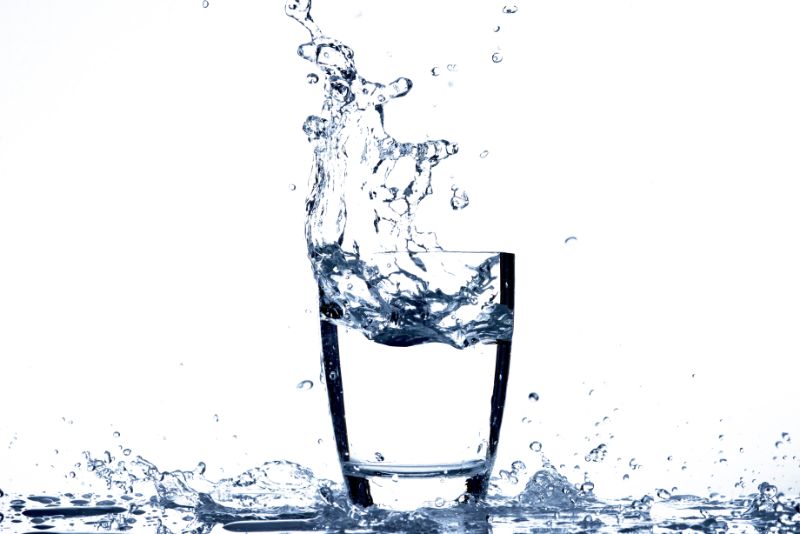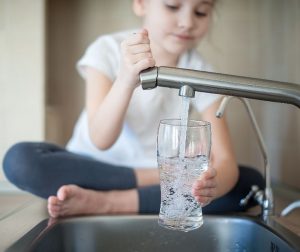Are you a contractor or a building industry professional who takes pride in being up to date with the latest and safest technology, ensuring your clients receive nothing but the best in terms of service and quality? Perhaps you’re a concerned parent, looking to protect your loved ones to the best of your ability. Maybe you’re a dedicated business owner who wants to ensure the best experience possible for both guests and employees alike.
Whoever you are or whatever your reasons: compassion, responsibility and safety are universal traits found in the best of us.
According to The World Health Association, every year around the world, over 800,000 people die as a result of unsafe drinking water. It may be easy for some to pass those numbers off, as an issue that doesn’t affect their part of the world—and you would be right, almost right.
Nature and contamination doesn’t discriminate. You could live in a region with the best resources available: access to clean running water, the best water treatment facilities, the best indoor plumbing and the best natural resources. Don’t get us wrong, that is absolutely something to celebrate. We should be thankful that so many people around the world have access to clean and safe drinking water; however, that doesn’t mean that we’re invincible.
As the team at UVP understands, Mother Nature can be unpredictable and as a result, unforeseen circumstances can lead to citywide contamination in the blink of an eye.
The only way to remain safe and secure is through the use of a UV water purification system. Keep reading for a comprehensive breakdown of what UV water purification is and how it works to ensure that every drop of water that comes from your faucet is 99.99% clean and safe.
Why is a UV water filter system needed?
In short, viruses and dangerous levels of bacteria can be present in drinking water and cannot always be detected by sight, smell or taste. Although water treatment plants follow strict rules and regulations surrounding disinfection before entering your home, water that comes from a municipal or city source must pass through countless miles of aging water pipes. Due to this journey, harmful contaminants such as viruses and bacteria find their way back into drinking water through damaged pipes and broken water mains.
Aging water pipes aside, natural events, such as heavy rainfall, melting snow, agricultural runoff and industrial pollution work together, offering a convenient pathway for contaminants to seep into wells and surface water sources.
Although there are a number of purification solutions available, disinfection by UV water purification is the most effective way to ensure your water is safe to drink by the time it reaches your tap. Click here to learn more.
Are UV purifiers safe?
Yes. UV water treatment is completely safe. No harmful chemicals are used and water composition stays the same. Yes, UV-C light is harmful to humans, but unless you’re touching or looking directly at the bulb, you are in no danger of negative exposure.
A UV system is much more simple and safe to operate than a chemical solution, such as chlorine. Chlorine treatment requires a retention tank and measured injections. In fact, many wastewater treatment plants have made the move to UV radiation to combat the chemical by-products found in water from chloramine treatment.
How does UV disinfection work?
UV disinfection is achieved by passing water through a stainless steel chamber housing a specialised germicidal UV light. As the water passes by the light, a lethal dose of UV is administered, altering the DNA in the cells of microorganisms, impeding reproduction, and thus, effectively killing them and keeping you safe.
Without the use of added chemicals or altering water taste, UV water purification systems have been proven to eliminate up to 99.99% of harmful microorganisms found in drinking water, including mould, yeast and fungi. Learn more about how UV disinfection works here.
What else does UV disinfection remove?
Aside from the pathogens and microorganisms mentioned above, UV disinfection treats water for:
- Dysentery bacilli
- Salmonella
- Mycobacterium tuberculosis
- E. Coli
- Hepatitis B
- Cholera
- Algae
When to use a UV water purification system
Think about it this way: in the case of a natural disaster, by the time the city puts out a Boil Water Advisory, your drinking water has already been compromised, putting you and your loved ones at risk. Even in the worst-case scenario, a UV water filtration system acts as a failsafe, keeping your tap water running free from harmful viruses and pathogens.
If your home’s drinking water comes from a well or storage tank, treatment and disinfection are your responsibility. Unless you are using chemicals to treat your water, UV disinfection is the most practical and effective solution.
Head over to our products page and check out our UV purification systems, specifically designed with wells and storage tanks in mind, for a cost-effective approach.
A Few Quick Facts Regarding UV Water Treatment
UV Disinfection…
- Has no residual disinfection
- Does not add chemicals to water
- Is easy to install and service
- Is recognised by regulators including USEPA (the United States Environmental Protection Agency)
- Offers protection should city water become compromised
- Aside from bacteria and viruses, if using a customised system, UV treatment can be effective against Giardia and Cryptosporidium.
Where can a UV purification system be installed?
The great thing about UV disinfection is that it can be installed anywhere and everywhere. Over the years, contractors and builders have been searching for a safe chemical-free solution for removing microbiological contaminants from drinking water and as such, UV disinfection has seen a massive surge in popularity.
When we say anywhere, we mean it…
Schools, daycare and healthcare facilities: This is where UV purification really shines. The young and elderly are our most vulnerable citizens when it comes to susceptibility to infection. UV water purification is a sure-fire way to protect our loved ones, keeping them safe from harmful bacteria and pathogens.
Offices and public building: As a responsible business owner, this simply comes down to good business. You care about the safety of your family, why not treat employees and visitors with the same respect?
Restaurants, hotels and resorts: In the world of hospitality, all it takes is a few bad reviews, or even worse, a lawsuit to force you to close the doors for good. A UV purification system will keep those 5-star reviews flowing in and is a great way to protect your business, ensuring your valued guests always have a safe and enjoyable experience.
Homes and holiday houses: Installed at the point of entry, a home UV system ensures every drop of water that comes out of your tap is clean and safe.
Campers, Caravan’s and boats: Don’t let poor water quality spoil your vacation. As we mentioned above, these UV systems can be installed anywhere, regardless of size and space.
What are the components of the UV purification system?
Depending on factors such as brand and model, UV systems differ from one another in design—some systems are brass tacks, as simple as they come, whereas other systems are highly advanced, utilising the latest in technology and materials.
Regardless, the main components that make up a standard UV purification system are as follows:
UV lamp: This is the element of the system that is responsible for neutralising microorganisms and viruses.
UV quartz sleeve: This refers to a cylinder-shaped tube that houses and protects the UV lamp.
UV chamber: The UV chamber is the housing for both the lamp and quartz sleeve and is responsible for controlling the water flow through the system.
Ballast/Controller unit: Varying from simple to complex in design, as its name suggests, the controller unit is responsible for maintaining and monitoring the electrical output of the unit and powers the UV light necessary for purification.
The above are the most common elements you’ll come across in a standard UV system; however, some optional elements you may encounter include:
Solenoid valve: This refers to an automatic shut-off mechanism that is triggered should the purification system malfunction, stopping untreated water from flowing through the system.
UV sensor: This handy feature monitors the UV light intensity, triggering an alarm should the intensity become to low.
Flow meter: The flow meter calculates and displays the real-time UV dose of a certain flow rate.
Maintenance of a UV system
Because UV radiation must reach the microorganisms in order to destroy them, it is imperative that the light source be maintained.
All UVC Germicidal lamps have a rated life of between 8500 and 10,000 hours. After this time, the lamp will not be producing sufficient UV to effectively kill micro-organisms. Therefore, the only thing you’ll have to consider is an annual bulb change. Thankfully, our team at Ultra Violet Products Australia has you covered with a comprehensive range of UV water purification systems.
In short:
Replace UV lamp once a year: Just because the lamp is still working after a year, doesn’t mean it is operating at full strength.
Replace the quartz sleeve every two years: Keep an extra on hand as they are fragile.
We hope you now have a better understanding of the benefits of UV water purification and how it works. Please, if you have any questions, don’t hesitate to contact us here, for any additional inquiries you may have.


